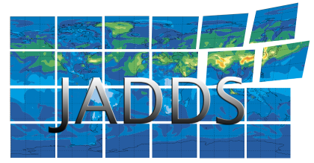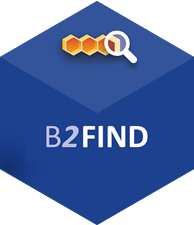
Contacts
Overview
The Jülich Atmospheric Data Distribution Service (JADDS) aims at providing the regional air quality community world-wide with customized atmospheric boundary conditions of trace gas and aerosol concentrations from the Copernicus Atmospheric Monitoring Service (CAMS). In the framework of Copernicus, the European Union’s earth observation programme, global analyses and forecasts for atmospheric composition are produced operationally on a daily basis. JADDS will collect and distribute such data in near-realtime using a WCS 2.0 service.
The WCS service is harvested by the EUDAT B2FIND service. Selected data products that are frequently requested shall be stored in B2SHARE and made available in the WCS infrastructure, users of the Jülich OWS interface (JOIN) will be able to store their data selections with a PID in B2SHARE for referencing them in publications.
The Scientific Challenge
Regional Air Quality (RAQ) models need time-resolved meteorological as well as chemical lateral boundary conditions for their individual model domains. While the meteorological data usually come from well-established global forecast systems, the chemical boundary conditions are not always well defined.
In the past, many models used ‘climatic’ boundary conditions for the tracer concentrations, which can lead to significant concentration biases, particularly for tracers with longer lifetimes which can be transported over long distances (e.g. over the whole northern hemisphere) with the mean wind. The Copernicus approach utilizes extensive near-real time data assimilation of atmospheric composition data observed from space which gives additional reliability to the global modelling data and is well received by the RAQ communities.
The Jülich server adheres to the Web Coverage Service WCS standard as defined by the Open Geospatial Consortium OGC. This enables the user groups to flexibly define datasets they need by selecting a subset of chemical species or restricting geographical boundaries or the length of the time series. The data is made available in the form of different catalogues stored locally on our server. In addition, the Jülich OWS Interface (JOIN) provides interoperable web services allowing for easy download and visualization of datasets delivered from WCS servers via the internet.
So far, the WCS server has been hosted on a local workstation in the atmospheric sciences institute and it is based on a deprecated WCS version (1.1.2). The performance of the service is limited by the server hardware and by the file-based data storage. The outdated WCS version prevents automatic harvesting of metadata for web catalogue services such as those offered by B2FIND.
Who benefits and how?
The Jülich Atmospheric Data Distribution Service (JADDS) is aimed primarily at regional atmospheric air quality modelling groups from all over the world. The envisaged JADDS data distribution server will help to strengthen the links between global and regional modelling communities, particularly for less developed countries where RAQ modelling is often lacking reliable and easy to use boundary conditions. Moreover, it will help to further disseminate CAMS products for atmospheric composition and thus foster collaboration on air quality monitoring in and beyond Europe.
Technical Implementation
The RASDAMAN Array Database Management System was successfully installed on a VM at FZ Jülich and ingested test data into the database. The test data already matches format, structure, shape, and metadata of the final data. In October 2016, the most recent release rasdaman v9.3 finally provided us with better support for netCDF4 and we managed to access first 3-d and 4-d geospatial coverages via the preliminary JADDS WCS interface.
Preliminary Results
The final input data set will consist of several years of daily data collections, each containing global 5-day forecasts for about 20 species with a horizontal resolution of 0.75° and 42 vertical levels.
The current test data realize four forecast time steps for one species with the desired resolution. The concept can be easily adopted for other species and longer time series. We can ingest and extract global metadata included in the input files.
For general acceptance in the atmospheric science community the data provided by JADDS necessarily needs to be compliant to the netCDF CF metadata conventions (http://cfconventions.org/). While the input files already stick to these conventions, many of the variable attributes do not seem to preserve easily when ingested into the rasdaman database or when translated into WCS coverages. Currently the RASDAMAN behavior for those attributes is examined with help from RASDAMAN staff.


